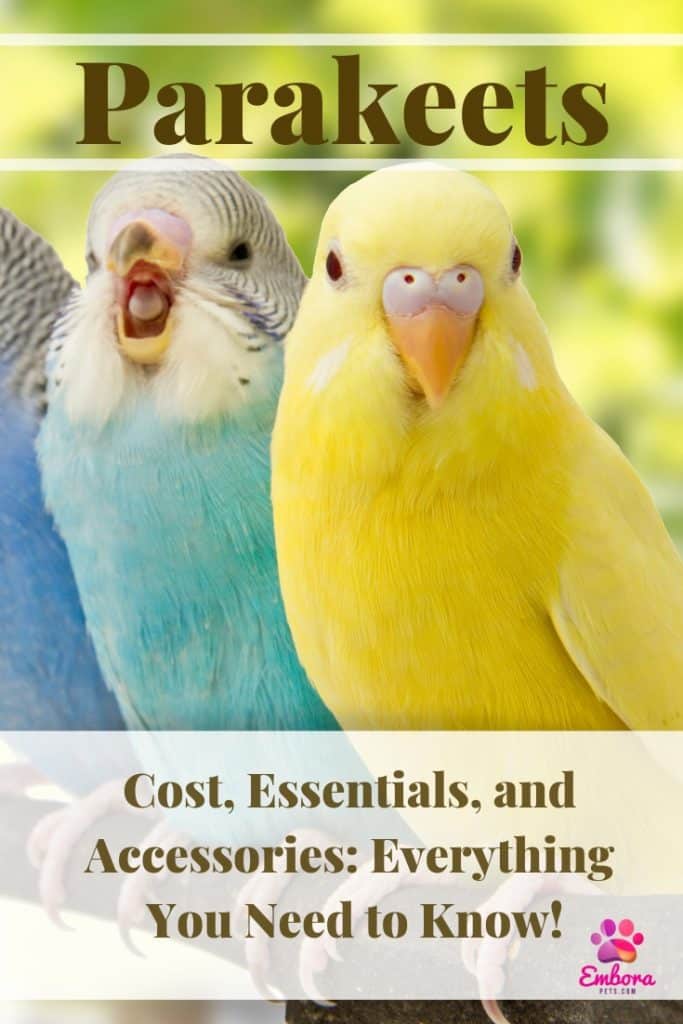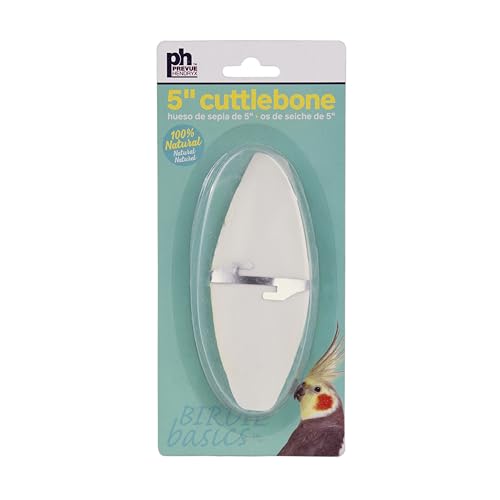How Much Do Pet Parakeets Cost? What About the Accessories?
What exactly does it cost to purchase and care for a pet parakeet? Have you ever thought about getting a pet parakeet, but the idea of the cost scared you off? Well, I’ve been there! So I’ve summed up the cost of parakeets and how much their accessories and care is. I compiled it into this article for those who have wondered as well
How much do pet parakeets cost?
The cost of a parakeet will vary considering where you get the parakeet from and the condition of the parakeet when you get them. This can also depend on the popularity of the pet at the time. On average, getting a parakeet runs anywhere from $10-$60! This is a good deal, considering the great companions that parakeets make.
This, of course, depends on several things, such as where the parakeet was purchased, what state it was purchased in, the popularity of parakeets at the time, and a few other things.
Not to mention the cost of the essentials and accessories that your pet parakeet will need, and the care they will need after the purchase.
Pet Parakeets: Cost
If you’ve never owned any kind of bird before, or if you’re looking for the most cost-efficient way to own a bird, then a parakeet is the right bird for you. They are one of the least pricey birds on the market.
Also, they are easy to train and take care of, which makes them great pets for first-time owners.
One very important thing to note though is that it is strongly recommended that people purchase and home parakeets in pairs. They are pack animals and are meant to be in a flock.
So, a life alone would quite miserable for this social animal. Keep in mind before purchasing parakeets, that these prices listed here for purchase and care will most likely be doubled.
It is acceptable to get a single parakeet if there will be someone home with the parakeet for most of the day, and willing to give the parakeet plenty of attention. As long as the parakeet is getting its needed socialization then all will be well.
An average parakeet will cost about $10-$60.
There is a lot more to the cost of a pet than it’s initial purchase cost. Especially with a parakeet. It is crucial to go through a budget and be able to set aside a certain amount of money each month and each year for your new family member.
So, an average parakeet will cost about $10-$60.At PetSmart, they sell blue, green and fancy parakeets. Each of them cost $23.99, so this is a good example of what a common price is.
Past this purchasing price, there are a couple of prices that are crucial to be aware of before purchasing a parakeet. According to Kiplinger, a good estimated cost for the first year of owning a parakeet is about $295. Then the estimated price of the entire bird’s life (which is 15 – 18 years) is about $2,885 – $3,440.
Places to Purchase Parakeets
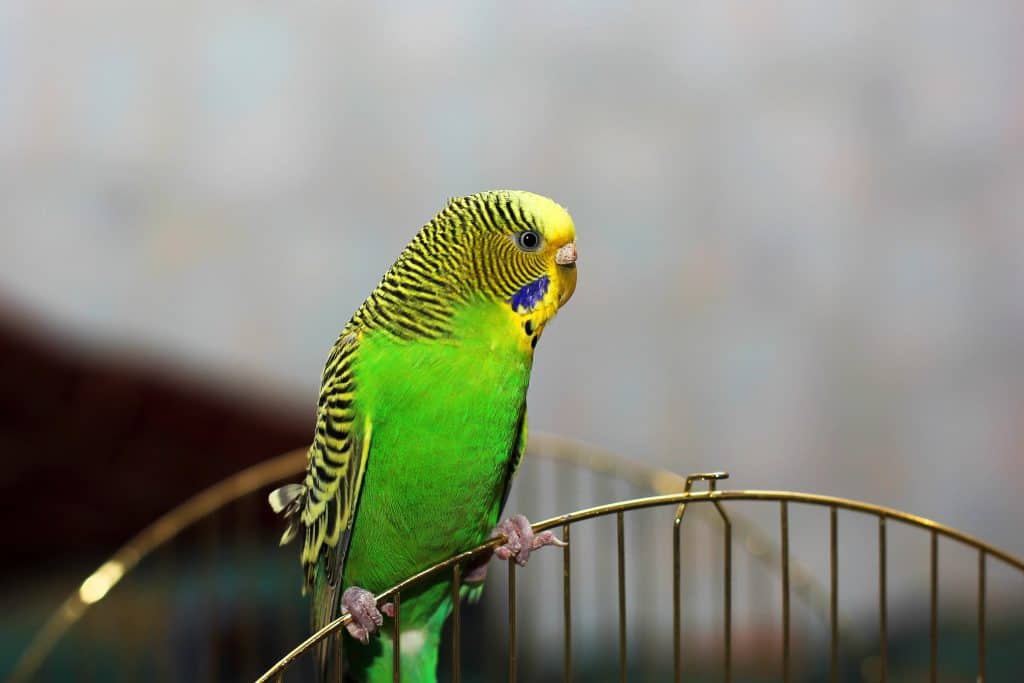
Pet stores such as Pet Smart and Petco are great options, but it’s important to note that they’re not the only options. You can also get parakeets from breeders or you can even adopt them!
There are rescue groups that you can search and adoption centers that have parakeets. Another great way to find them is through newspaper ads, friends and even online markets such as Facebook’s market.
Some other great sources are PetFinder.com and the Humane Society in your local community. These are great places that help you to find parakeets that need a home, and often they are less money than many pet stores. This benefits both the parakeet and you.
Essentials and Accessories Cost (About $125)
Cage (About $85)
The first essential that will be needed is the cage. This cage will be your parakeets home, so it is very important that it meets all the requirements it needs. It should remind them of their natural habitat. This means that the bigger the cage then the better.
The minimum cage size for one parakeet is 16x14x18″. But, the recommended space is 25 inches tall and 25 inches deep. For two parakeets this doubles, and is 50 inches tall and 50 inches deep. The taller the cage, the better, as parakeets are very active.
The cage will need to have horizontal bars. These will provide both entertainment and exercise as they will be able to climb the side of the cages. The bars should be about a half inch apart. Any larger and the parakeet might try to sneak its head through the bars.
The price of a good cage will cost about $70-$100. There are many great options for places to buy a cage. On Amazon, they have two great options. This One is a great size and especially is very tall which is good. But it is made primarily of vertical wires rather than horizontal.
The other option is still a great size but isn’t quite as tall. But, this one does have horizontal wires. When purchasing a cage it is important to find what will be important for your parakeet.
Inside the Cage (About $40)
There are also things will have to purchase for the inside of the cage. These things include things such as a fleece hammock tied to the top that the parakeet can rest in, bedding, and hanging devices.
These things will vary in prices.
Bedding ($15)
There are many types of bedding. This includes sand, sand sheets, aspen wood pellets, recycled paper or cage liners. Each type of bedding will have its benefits and drawbacks. For example, using sand at the bottom of the cage may be messy.
Your bird may kick out bedding on to the floor, but natural sands provide a much more natural habitat for the bird. Sand sheets avoid the mess but don’t provide that natural environment for the parakeet.
It is important to do research and find which will be best for you and your parakeet. But as an idea, if using commercial bird bedding, the average price is going to be $10 – $20 for every 8-pound bag.
Food and Water Containers ($10)
Most commonly, for parakeets, food bowls that can be clipped to the side of the cage are preferred. Birds will prefer to eat in the air rather than on the ground, as the air is their comfort zone. Most are sturdy plastic as this is easiest to clean and safest for the bird. At Amazon, this costs only $9.99.
Water containers cannot sit next to a food bowl, open. Parakeets are messy and will most always soil their water by getting seeds or feathers in the water. Rather, there are special water containers designed specifically for birds and their wellbeing.
They are often called “water silos”. On Amazon, they are anywhere from $5.50 – $13.00 depending on whether you want a standard, tall, or tall 2-pack.
Water containers cannot sit next to a food bowl, open. Parakeets are messy and will most always soil their water by getting seeds or feathers in the water. Rather, there are special water containers designed specifically for birds and their wellbeing.
Toys
Parakeets are very smart animals, which means they can get bored easily in the confines of a cage if there aren’t things to keep them entertained. Many toys will need to be provided.
If there isn’t a lot of extra room in the cage, you should cycle through many toys on a normal basis. This will keep the variety and keep your bird from becoming bored.
There are many things that can be provided as toys. Many hang from the top of the cage. There are kabobs, blocks, and mobiles galore. These will cost anywhere from a couple of dollars to about $20. The important thing is to make sure the toys are quality and that you have enough to provide variety.
Food
Parakeets and other birds about 20 years ago were fed pellets designed to give them everything they need. Now, almost all bird owners provide quality commercial seed formulas, fresh fruits and veggies, and a number of other needed supplements.
Parakeets need seed mix that contains things such as oats, red millet, and other crucial nutrients. According to Parakeethome.com, some of the best seed mixes of 2019 are:
Dive in Deep: Want to go deeper into the topic of, What parakeet’s eat?
Fruits
- Apples (seedless)
- Pears
- Melon (seedless)
- Kiwi
- Berries
- Grapes (seedless)
- Oranges (seedless)
Veggies
- Kale
- Romaine Lettuce
- Spinach
- Carrots
- Broccoli
- Asparagus
- Sweet Potato
- Squash
- Cooked Corn
Birds have unique digestive systems and quirks when it comes to eating. Because of this, there are a few extra things that will be required for your birdy.
The first of which is cuttlebone. Many rodents and fowl teeth and beaks never stop growing. Parakeets are one of the many. This is crucial for these wild animals, but as pets, it can become a problem.
Cuttlebones have a great surface that helps parakeets grind down their beaks. Also, eating them can be a great source of calcium for your bird.
Secondly, they will need a mineral block. This will provide another way for them to keep their beak in good health, as well as providing them the essential nutrients and minerals that are needed.
Overall the interior of the cage will cost about $30-$50 for the first time setting it up.
Annual Cost of Parakeets
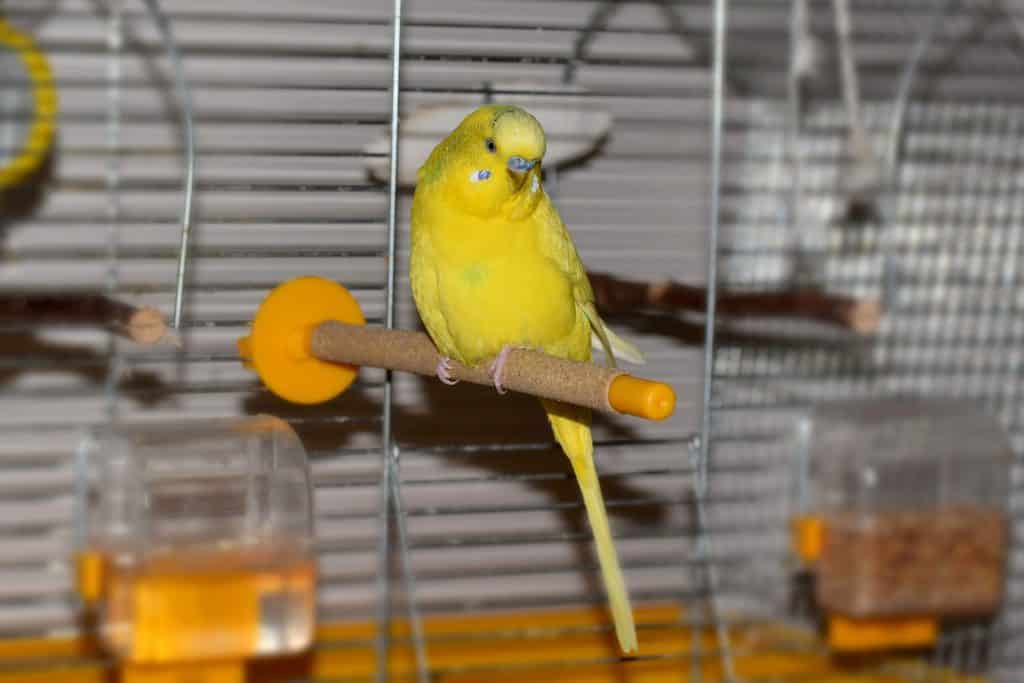
As you know, animals are alive, which means that they require upkeep and care year after year, just like humans do. So, when getting a pet it is good to look at how much on average it will cost per year.
This way, you can make sure that you have the necessary funds to give that animal the care it deserves.
Kiplinger gives us some great estimates and averages of the price of owning a parakeet per year. According to their website, the average annual cost of caring for a pet parakeet is about $185. This is not including unforeseen vet trips that may occur. This average annual cost is made up of three annual prices.
That includes $75 for food, $25 for toys and treats, and $85 for vet check-ups. This, of course, will leave out some costs, such as bedding, but it is a pretty good estimate.
Cost of Care
As for unforeseen vet trips, there are several health concerns that parakeets deal with, which we will discuss later. But, to give an idea for how much this unforeseen cost will cost, Kiplinger says that the average amount of money spent on surgery in 2018 was about $190.
In order to keep your veterinary bill from skyrocketing, steps need to be taken to prevent injury and disease. Be sure to keep a close eye on your bird to look for any symptoms or signs that they may be in pain. It is also crucial that their living conditions must be kept clean and safe.
Later we will talk about parakeet hygiene, which will be needed to follow crucially in order to keep your parakeet happy as well as your bank account happy.
Price Compared to Other Birds
There are many options for pet birds and they each have their own benefits and drawbacks. One of those differences between pet birds is their price.
In that perspective parakeets may be one of the best options, considering they usually cost somewhere from $10-$60. According to The Spruce Pets, these are the following prices of birds ranging from canaries to macaws.
Small Birds
| Canary | $25-$150 |
| Finch | $10-$100 |
| Parrot | $100-$300 |
Medium Birds
| Cockatiels | $50-$150 |
| Conures | $150-$500 |
| Doves | $20-$100 |
| Lories | $400-$900 |
Large Birds
| African Grey | $600-$2000 |
| Cockatoos | $800-$5,000+ |
| Macaws | $900-$5,000+ |
Common Health Problems
Of course, when it comes to health problems, it is not your responsibility to diagnosis your bird with an illness, but it is your responsibility, as a parakeet owner, to be able to pick up on symptoms of oncoming or present illness. This will allow you to properly prevent sickness and even death.
Animals.Mom.
Omlet.Co.Uk provides a list of symptoms that you will need to be aware of. If your parakeet shows any or all of these, seek professional help. Try to find a vet that has specific training and knowledge in parakeets.
Symptoms:
- Increase in Lethargy
- Parakeets are very active and lively, even if they’re timider. So, if they are silent and motionless for a long period of time, and they’re not sleeping this is something that should cause concern. Especially if they have lost interest in their usual interests. If they don’t have any interest in food, toys, their mate or you, a vet should be seen.
- Sleeping During the Day
- Unless something could be keeping them up at night (noise, lights, etc) then parakeets shouldn’t be sleeping excessively during the day.
- Fluffed up Feathers/Shivering
- This means that the parakeet is too cold! Either their cage is too cold, or they could be getting sick.
- Excessive Squawking
- If there is nothing in the vicinity that could be giving your bird anxiety, and he won’t stop screaming out, then there is a good chance he is in pain.
- Droppings
- One sure sign of illness is the color and appearance of their poop. You will know what it looks like, and be used to its appearance. So if their diet hasn’t changed, but their droppings drastically have, that is something that should cause some concern.
- Gummed up Nostrils/ Gooey Nose Discharge
- A healthy parakeet will always have a dry head. It should never be wet. This can be a sign of a deadly infection.
- Swollen or Sore Eyes
- This or any eye discharge is another sign that something could be infected. Vet intervention will be needed quickly.
- Sticky Feathers on Head or Face
- This may be another sign of infection. This one is incredibly important to notice because without immediate vet intervention your parakeet will die very quickly.
Diseases:
- Mites
- If your bird’s beak or feet are covered in a thick scaly build up, your bird might have contracted mites. A vet will need to be seen to prescribe antiparasitic medicine to get rid of the nasty mites.
- Egg-Binding
- Egg-binding is when a female bird’s eggs are released at a non-natural rate. They will get stuck in the reproductive tract. This can cause many problems. If it’s pinching a nerve, one of their legs can even become paralyzed.
- A parakeet that has this problem will most likely walk a little funny, wag its tail a lot and have a swollen abdomen. A vet will need to be contacted to remove the egg.
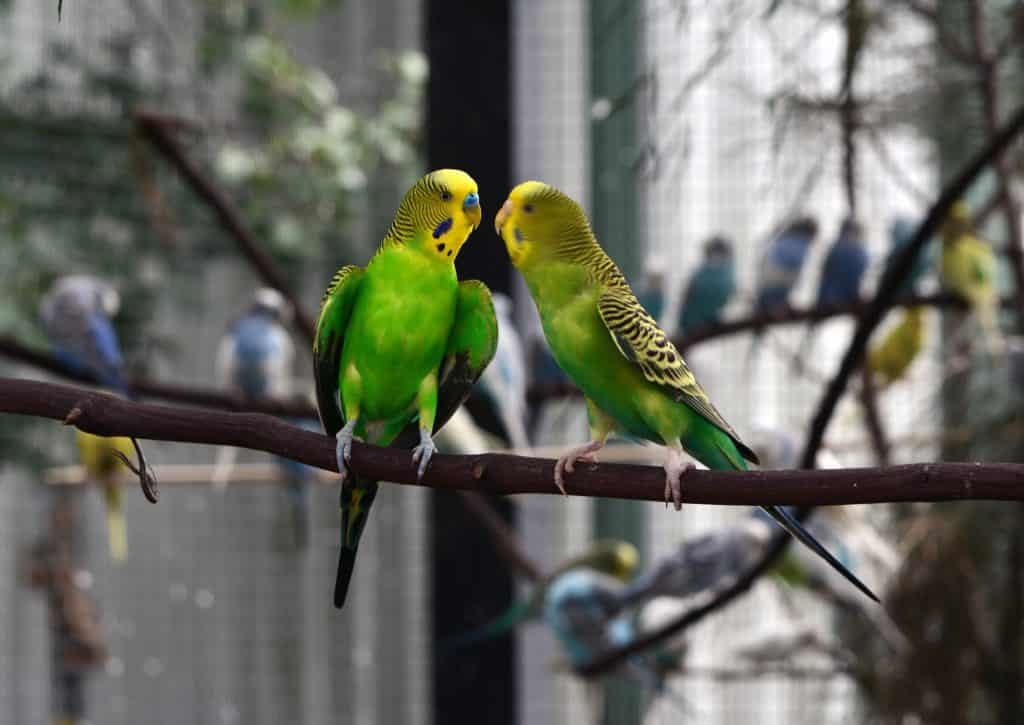
About the Parakeet
Parakeets are also known as budgies! They’re great for first-time owners as they are inexpensive and easy to own. Not only this, but they are some of the most popular birds to own because of their friendly and loving personality. They’re also very easy to train and they’re quite smart!
Parakeets can even learn to speak! Males are faster at picking up learning to speak. While females can be taught, males are far more successful. They are also more likely to learn if they are taught before 12 weeks old.
The lifespan of the parakeet varies quite a lot. They can live to be anywhere from 5 to 15 years old. This will depend a lot on the quality of life that you provide for them. They usually spend 10-12 hours a day sleeping.
With your bird, you’re going to need to plan on spending at least a quality half hour with your parakeet. They love spending time with you, and the more time you spend with them, then more trust and love will be built into your relationship.
This is only if you have two or more parakeets though. If you only have one parakeet you will need to spend at least four hours a day with your parakeet. They are very social and lively animals, which means they cannot be ignored or neglected.
Diet
A parakeet’s diets should have variety and color. Every day they need seeds and/or pellets provided to them. Their fruits and veggies should be fed to them at least every other day, but it is preferable that they have these options every day. As for cheese or eggs, these should be fed either once every other week, or once every week.
Exercise
As parakeets are very active, exercise is one of the most important ingredients to their happy and healthy life. In their cages, you should provide many toys, perches and things that will provide them things to do.
They get bored easily so it’s important to remember to keep the toys and entertainment lively and diverse.
But, as they are birds, flying is one of the most important ways that they can exercise. But, before you let your parakeet fly free, there are a few things that are crucial to check before.
You must remove all possible hazards or disasters. And they cannot be allowed to fly free about a room unless supervised.
- You must cover all of the
windows and mirrors. If they’re not covered or hidden, a bird can easily think that they can just fly through them. This will cause them to get hurt. - Close all windows and doors and let anyone else in the house know that they cannot open those windows or doors. They must remain shut until the parakeet goes back into its cage.
- Send any other pets (cats, dogs, guinea pigs, etc) out of the room. This other animal presence could cause distress or injury.
- Remove any poisonous plants.
- Turn off ceiling fans as well as any other fans.
- Turn off heaters/stoves/ovens or anything that could have a hot surface. Wait until they are completely cooled to let your parakeet out.
- Remove/cover any open water sources (such as fish bowls).
- Hide and/or unplug any electrical wires or cords. Remove anything that if your parakeet chewed on, could harm them.
It’s important to note that it is immensely helpful if your parakeet is finger trained before you try to let them out of their cage and fly free.
Finger Training
So finger training is when you train your bird to “Step Up” onto your finger as if your finger was one of their perches. This can take a while, but it just requires some patience.
Always be sure to be incredibly gentle with your parakeet. They are tiny and fragile. And the more gentle you are, the more likely they will form a loving relationship with you.
- First, you must build trust between you and your parakeet. To do this, start putting your hand in their cage. Do this frequently and incessantly. Just insert your hand and allow them to get used to your presence.
- Next, when they’re comfortable with that, try to feed them a treat out of your hand.
- After succeeding at that a couple of times, stick your hand in the cage again several times, but this time hold a perch or a stick. This will familiarize them with the idea that they can perch on you.
- Try to get your bird to get on the perch at this point. Once they do that they are even closer to perching on your finger.
- Once they perch on the perch, hold the perch at a right angle to their body. This ensures that they will be balanced and comfortable, which increases the likelihood that they will trust you.
- Nudge them slightly on the chest, while saying either “Up, up” or “step up”. This triggers their step up reflex and will get them used to the idea of stepping up onto you.
- Once they’ve done that, and while they’re still on the perch, make sure to give lots of praise. This can be done by petting them on the head.
- Then every time you hold the perch out, move your hand closer and closer to the end of the perch. Eventually, your parakeet will step up on your finger!
- Eventually, you will leave the perch out of it altogether. You will hold your hand up to your bird, slow and steady, and nudge them softly on the chest while saying your command.
By training your bird to step onto your finger you can more easily get them out of and back into their cage. It will reduce both their stress and your stress.
If your bird is not finger trained quite yet, getting them back into their cage can be more difficult. One thing is important though. That is to never chase them around the room. This will cause both of your stress levels to skyrocket.
Many parakeets see their cage as their safe place, and they will return there in between flights. Other times they may get lost or confused or may just be extra adventurous. In this case, rather than chasing them around, dim the lights. They are more hesitant to fly when it’s darker.
They most likely will land and you will be able to calmly get them back to their cage.
Hygiene
Parakeet hygiene is crucial! They must be kept clean in order to prevent diseases and to ensure a happy and healthy life for your bird.
It is recommended to spot clean the cage at least once a week. It will need to be fully cleaned out, disinfected and old food/bedding be replaced at least every month. When cleaning the cage, never use soap. Rather use a disinfectant that is safe for your bird.
Always double check labels and research to make sure the disinfectant you’re using is safe.
Your parakeet will need a bath every one to two days. The best way to do this is
Related Questions
Do parakeets need to be in pairs?
Birds are meant to be in flocks and so birds that alone will more likely have more health problems, be more lonely and live a shorter life. To improve their quality of life, it is good to get them a buddy!
Should I cover my parakeet’s cage while they’re sleeping?
Covering a parakeet’s cage while it is sleeping helps to trap the heat in the cage, and they cannot sleep in unheated places. Just mind to take the cover off slowly and gradually in the morning so as not to startle the bird.
Do parakeets smell bad?
In general, if a parakeet and their habitat are kept clean there will be no smell at all! Many think that they might, but they are like dogs in this way. If cleaned properly, they don’t smell.

